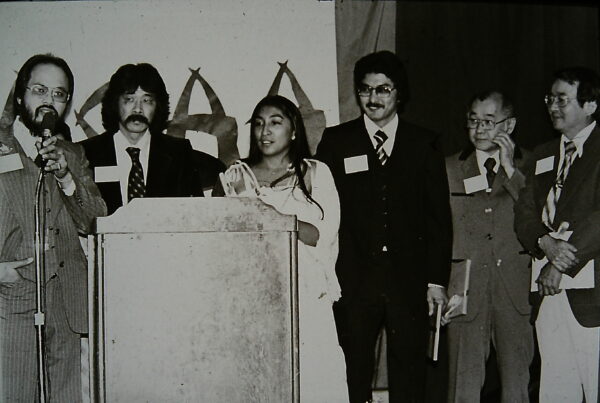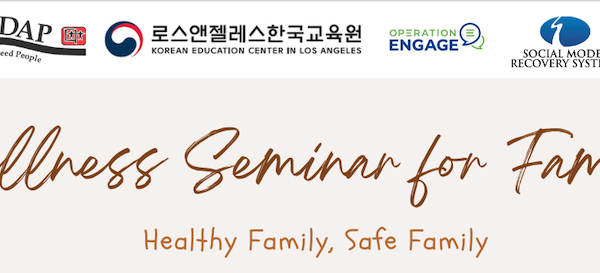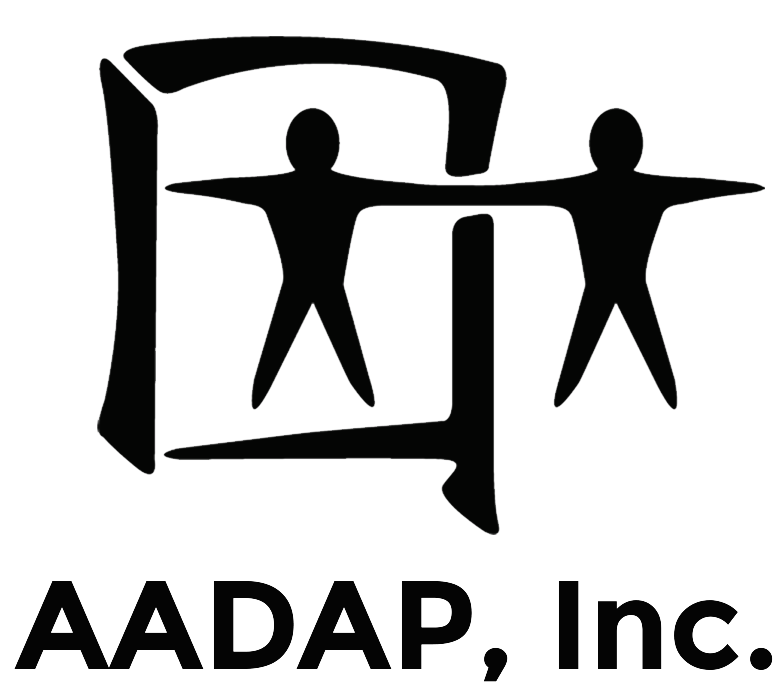By Jeanne Shimatsu, Prevention Director and Rahimah Shah-Fiddmont, Editor
It is an honor to feature Jeanne Shimatsu on her promotion as AADAP’s Prevention Unit Director. Jeanne has fearlessly dedicated thirty-six years at AADAP in her former role as AADAP’s prized and respected Community Prevention Coordinator. The Prevention Unit and AADAP stands by and with Jeanne. With warmest congratulations to Jeanne on her well-deserved success, her relentless work for the youth and social justice is proven through her heart’s work and in this interview feature.
Q: Please briefly share what brought you to AADAP. Share your beginnings at the agency.
A: When I joined AADAP’s Prevention Unit in 1986, we were housed with Outpatient and the Therapeutic Community (TC), snuggled happily together like busy bees in the older two-story building located on Crenshaw and 54th. I was greener than green, and many of the AADAP seasoned staff were there to teach me the ropes about the neighborhood, prevention, addiction, and treatment. Some of the more streetwise staff made it a point that I have a crash course on the use of ‘colorful language’, which I eventually mastered fluently. Our prevention office had a well-worn, mad-tea party look consisting of old mismatched desks and chairs, along with a shared typewriter for correspondence. The discussions and efforts captured the essence of drug prevention and history, social justice, solidarity and commitment to communities and their people. It was beautiful and I loved it. AADAP became my second home and second family.
Q: Were you always part of Community Prevention? If not, please share.
A: The beauty of the early days when AADAP was so much smaller in size was the blended cross-over of unit culture and support which emulated the agency’s “family concept” which, while valuing individual growth, contributed to the greater good of the family and the community. While my primary job role was Youth and Community Programming in the South Bay, additional experience was gained through the assistance of the other AADAP programs. One example was conducting UA (urine analysis testing) for the female clients when their counselors were not available. As Prevention was positioned down the hall, staff got to know the residents well and provided support through periodic educational and creative workshops. In my youthful zeal, I introduced several holiday events at the agency; Secret Santa exchange between staff and residents, Valentine card exchange (using the agency dog, Pepe, to deliver the special notes), and other interactive exchanges. It brings a smile that Secret Santa is still practiced to this day.
Q: Can you talk about the evolution you’ve seen at AADAP and with the work you and your teams have done over these past decades?
A: As I process my experience on the evolution of AADAP and Prevention, it can be marked by the decades and significant events that corresponded on that timeline. The late 1980’s served as my introduction to learning about the world of addiction- cocaine, meth, heroin by those in recovery. While I facilitated prevention education programs with elementary through high school aged children, my own learning curve included life lessons working with children from immigrant Mexican, Central American and Chinese monolingual families, or working with youth who were coming out with their gender identity, being a support to youth who had no place to belong or walked to the beat of their own drum. Many AADAP staff who worked with youth bonded over the experience of the Brotherhood Sisterhood camps which laid the foundation of addressing “-isms”, identity, and campaigns embracing social/community justice. An event that deeply marked my memory was the 1992 civil unrest after the beating of Rodney King and subsequent acquittal of the officers involved. I was on the road, coming back from a high school youth group meeting in Gardena when I heard the news of the acquittal. There was palatable tension on the streets and the AADAP building was in the heart of it. So many stories were voiced, and lessons learned as the city raged that “enough is enough”. This period deepened the direction of our prevention work as we focused on raising consciousness about people of color, deeper level communication, institutionalized racism, and the movement toward social and community equity. Generations of our youth coalition members found their empowerment, found their support, and became part of a second family through AADAP prevention programs. To this day, I’m fortunate to be in touch with many former students, who are professionals, parents, and some young grandparents whose formative years were influenced by their time with AADAP.
The decade of 2000 was another pivotal milestone when environmental prevention and evidence-based efforts re-directed our work toward policy advocacy which laid the foundation for the Community Prevention (CP) team. Since the early 2000 (to current date) when I became the CP Coordinator, CP community organizers adopted policy advocacy strategies with their community coalitions who directly contributed to the successful passing of 18+ tobacco, alcohol, and other drug related prevention-based ordinances in South Bay municipalities.
Q: In your transition from CP Coordinator to your recent promotion as Prevention Director, what valuable lessons are you taking with you into your new role?
A: Moving ahead, the plan to coordinate a stronger cross-over within the Prevention Unit and AADAP agency is in the works through enhanced advocacy (policy, media, social justice), comprehensive service resource access, and a deeper reach to our underserved populations. The family concept, ‘Ohana, is the cornerstone value that we actively cultivate and practice. As the Prevention Unit moves meaningfully forward, we are made stronger because of ‘Ohana. Prevention Unit, with the esteemed duo of coordinators, and teams of valued organizers, counselors, educators, and outreach workers, are ready to take on 2022 and beyond, together.



